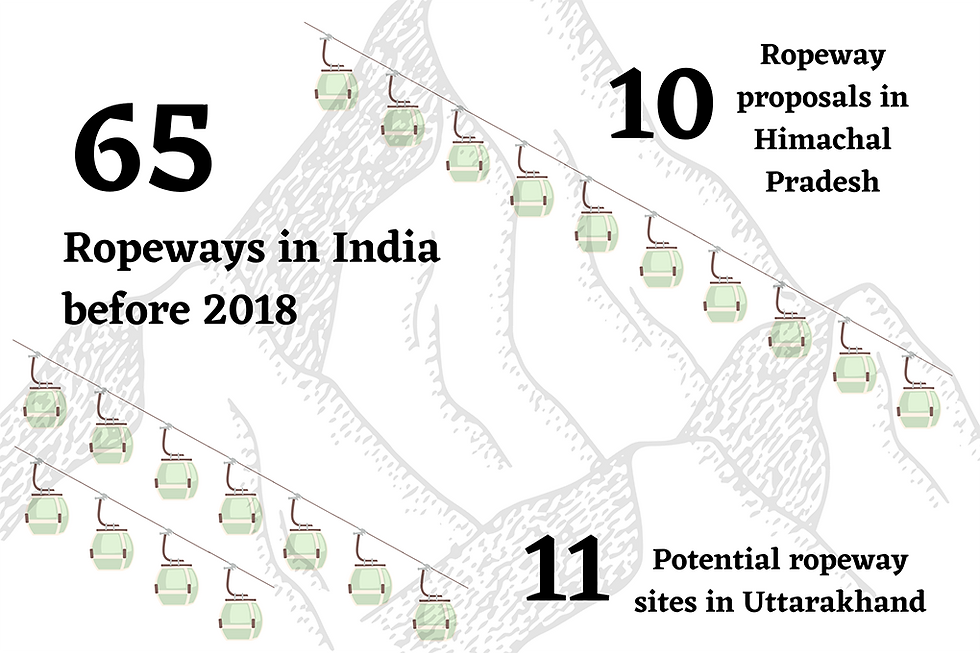Parvatmala Pariyojana
- connect2783
- Mar 28, 2024
- 2 min read
Updated: Jul 16
India is betting on ropeways to solve mobility challenges in tough terrains and congested cities. With over 200 projects planned under the Parvatmala scheme, smaller cities are becoming key sites for this shift. But the success of this green push will depend on local acceptance, environmental assessments, and how well ropeways can integrate into everyday public transport. Will they become a reliable ride for the daily commuter?
Are Ropeways Reconfiguring The Way We Move?

India will have its first aerial cable-car urban transit system for the public by May 2025. Under the Parvatmala Pariyojana, the 3.75 km long Kashi Ropeway is projected to carry nearly 1 lakh passengers per day.
At a collective cost of ₹1.25 lakh crore, 200 such projects have been identified under the National Ropeways Development Programme. With nearly 30 projects underway, the Union government aims to enhance connectivity in difficult terrains, reduce commute time, and decongest urban areas that lack conventional mass transit systems. While Prayagraj is set to have the country’s longest ropeway across a river, the Rajasthan government plans to set up ropeways in 16 locations, including cities like Bundi, Sikar, Ajmer, and Banswara.
With nearly 30 projects underway, the Union government aims to enhance connectivity in difficult terrains, reduce commute time, and decongest urban areas that lack conventional mass transit systems.

Authorities advocate for ropeways as an efficient and greener alternative that will reduce pollution. However, the Haldwani-Nainital ropeway had generated concerns due to frequent landslide occurrences.
Kullu and Bhuntar residents have protested against the proposed Bijli Mahadev ropeway, citing their deity’s displeasure towards it. Experts are urging for extensive Environmental Impact Assessments of these projects, especially in the Himalayas because of the region’s sensitive ecology.
Presently, ropeways have been adopted for boosting tourism and other commercial purposes. But with inflation and new GST regulations, the Maihar Ropeway had to revise fares for pilgrims visiting Sharda Devi due to increased operational costs. Meanwhile, Aizawl’s Dartlang-Chaltlang Ropeway had incurred over ₹15 crore in wasteful expenditure due to lack of feasibility assessment and approval failures, ultimately yielding no tangible public benefit.
Despite such hurdles, there is an ongoing momentum behind ropeway development across smaller cities, as sustainability is an intended goal for this push.
Concerted efforts are needed to address regulatory frameworks, conduct comprehensive assessments and engage local communities effectively to make ropeways more accessible as a means of public transport.

Comments